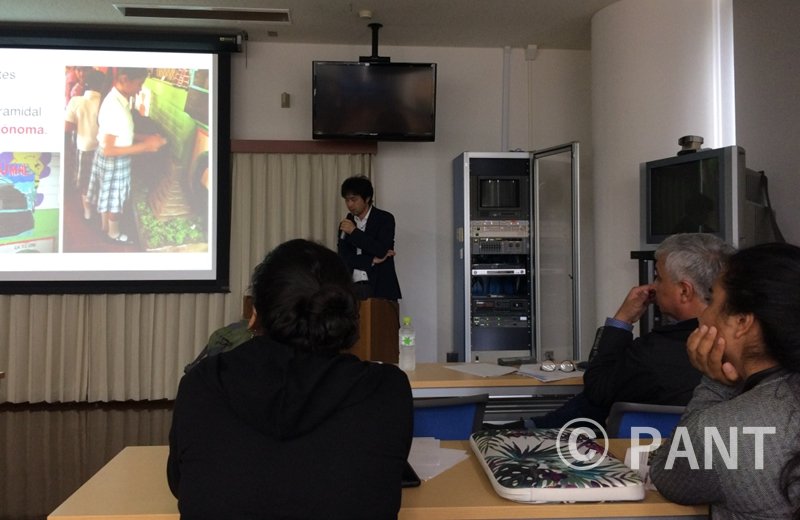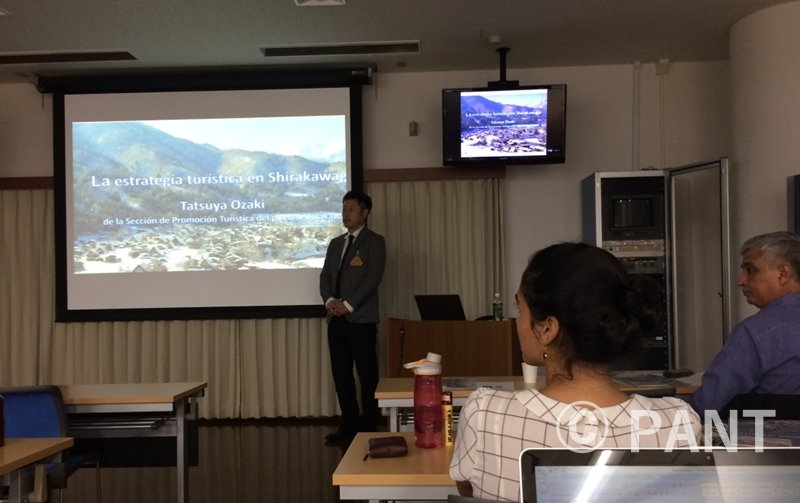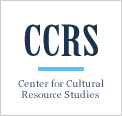Trainees report:Kanazawa Training Program:October 11, 2019
Miguel Ángel Echeverría Tager
(2019/10/12)
After two days out on the streets of the historical and cultural quarters of Kanazawa, we returned today, Friday, October 11, to the classroom to hear two presentations. Mr. Musakage Murano from the Museum of Kyoto presented to us the theory and practice of Public Archaeology. Mr. Musakage Murano works for the Museum of Kyoto, but has done extensive work in archaeological parks around the area of Chalchuapa, El Salvador. His presentation addressed the problems that public archaeology faces in Central America and the solutions he proposed always came from an educational and a political perspective. Since all of us are involved in some way or another in the development of the area around Tikal National Park —itself an archaeological park—, the theory covered in Mr. Muskage Murano´s presentation was something we could easily relate with, even if it was something that some of us had never heard before. We all could not help but agree that the lack of leadership and organization, whether in the educational system or among the policy makers in Guatemala, are one of the major problems that need to be situated in the foreground of any discussion on social development. The two Q&A sections served to share this opinion and to point out the similarity between the situation of archaeological parks in El Salvador and in Guatemala. The Attendants to this lecture included two undergraduate students of Kanazawa University from Latin America that also participated in the discussion we had.

Trainees hearing Mr. Musakage Murano´s presentation
The second presentation was an introductory session for the upcoming visit to the town of Shirakawa we have in our agendas. Mr. Tatsuya Ozaki from the Section for the Promotion of Tourism of the Town of Shirakawa, presented to us the recent history of this town that that has been part of UNESCO´s list of World Heritage Sites since 1965. Aware of the project that brought us here, his presentation focused on how Shirakawa grew from a recondite town in the mountains and became a touristic attraction that brings thousands of people to Japan. He expounded on the politics of tourism that the town has adopted to attract visitors and presented accurate statistics, something that definitely struck a chord in Mr. Francisco Cano, the trainee that represents the Guatemalan Institute of Tourism and Mr. Cristian Aguilar, the trainee that represents de Honduran Institute of Anthropology and History.
The presentation went on as Mr. Tatsuya Ozaki thoroughly explained the advertising campaigns that have been developed to target specific touristic sectors. Social network posts, printed material, video and multimedia presentations were handed out or projected on the screen for us to see. The marketing research that lies underneath all the results that we could see impressed us all. We all think that this is an example we should follow. We all believe this is a possible model that could be adapted to the conditions of our country and eagerly await the day when we will visit this town to see its touristic organization with our own eyes.

Mr. Tatsuya Ozaki expounding on the advertising campaign developed by the town of Shirakawa
